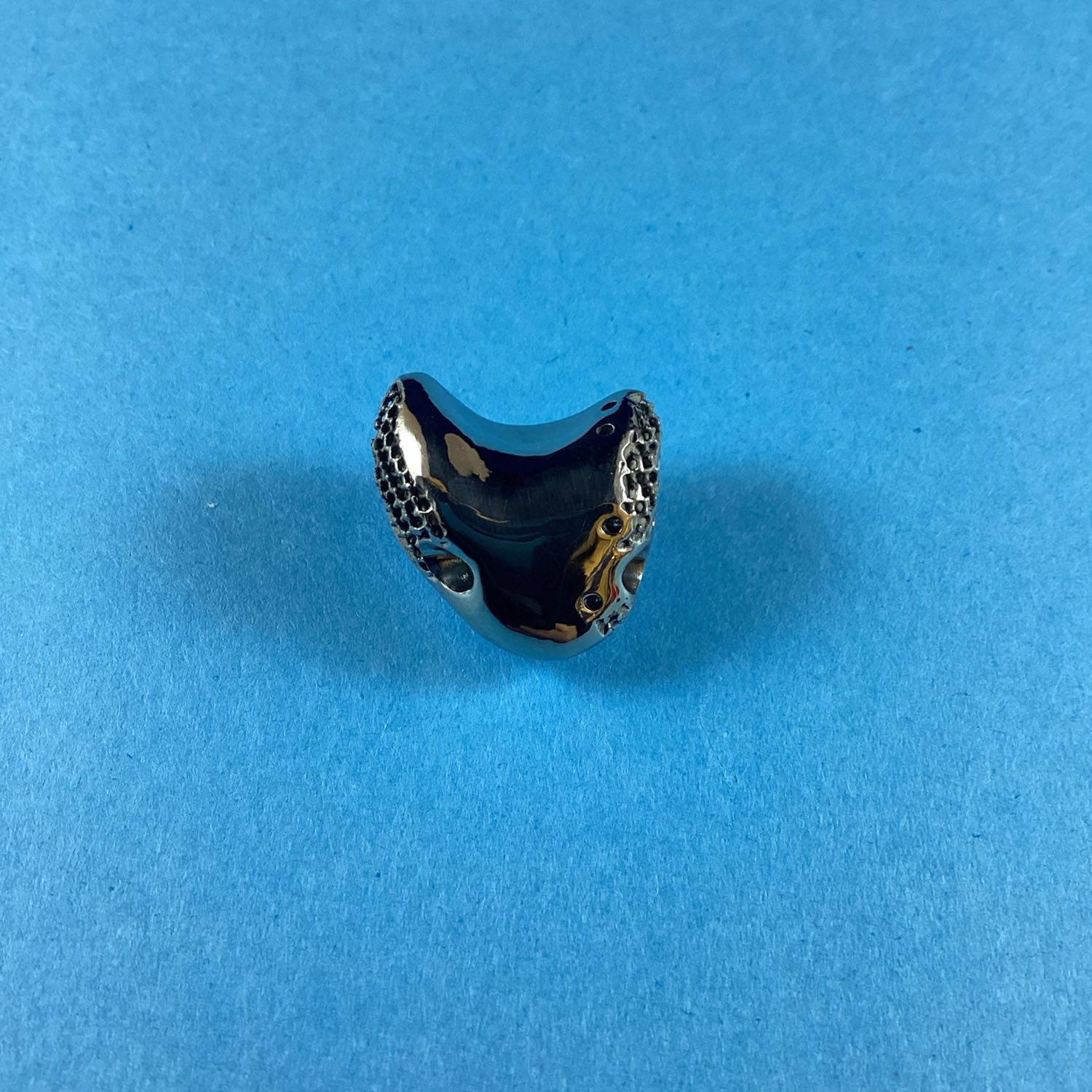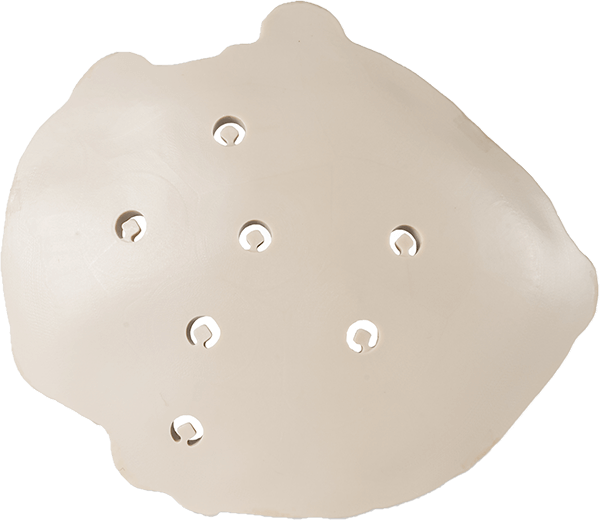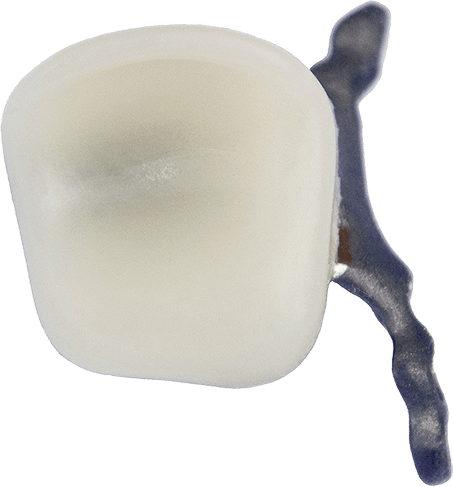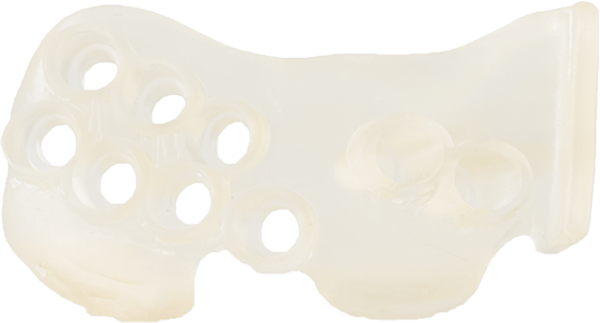Materials
CADskills can deliver a skin patch allergy test, including all used materials, if desired by the surgeon. To order an allergy test, please contact us.

Titanium
Our titanium implants are additively manufactured, using the selective laser melting technique. Selective laser melting (SLM) is an additive manufacturing technique using a high-power-density laser to melt and fuse metallic particles. 3D printing makes complete design freedom possible.
Titanium is biocompatible because it has a low electrical conductivity which contributes to the electrochemical oxidation of titanium leading to the formation of a thin passive oxide layer. The oxide layer in turn leads to a high resistance to corrosion. The alloys that are preferred for the fabrication of titanium implants are commercially pure titanium (CP- Ti) and titanium alloy Ti6Al4V (Ti-64). The risk of metallosis is neglectable in comparison with for example CrCo.
The titanium used by CADskills is Ti6Al4V grade 23 ELI, an alpha-beta wrought alloy. ELI stands for “extra low interstitials”. Ti Grade 23 ELI features high strength, low weight ratio and excellent corrosion resistance.
By applying additive manufacturing, porous structures, or scaffold can be embedded in the implant. These porous structures can be tailored to show excellent mechanical properties like those of human bone (Young modulus) and are usually designed to facilitate bone ingrowth.

PEEK
PEEK (Poly-ether-ether-ketone) is a synthetic material that has many advantages in cranial repair surgery such as its strength, stiffness, chemical inertness and durability. PEEK is mainly used for cranioplasty, but facial implants in PEEK are an option too.
The polymer is milled, as 3D printing of medically approved PEEK is not an option yet (but soon to be certified). The material can be re-sterilized and reused in the case of failure from infection and is easy to modify intra-operatively using a high-speed burr.
PEEK as a polymer has an extremely low thermoconductivity, when compared to titanium that has already a low thermoconductivity compared to other metals.
CADskills uses a medically certified PEEK, that has a proven quality of the material and the availability of many years of clinical follow-up of patients that underwent for example cranioplasty.

UHMWPE
CADskills has developed a new GUR material, being a UHMWPE specifically treated to increase wear resistance. The method is undisclosed. The UHMWPE is enriched with vitamin E, being a potent antioxidant. These characteristics make this material especially suited for articulating surfaces.

Cutting guide materials
Our cutting guides are 3D printed in a class 1 biocompatible resin, that is autoclavable. The material is specially developed for printing precise surgical guides and similar devices.
